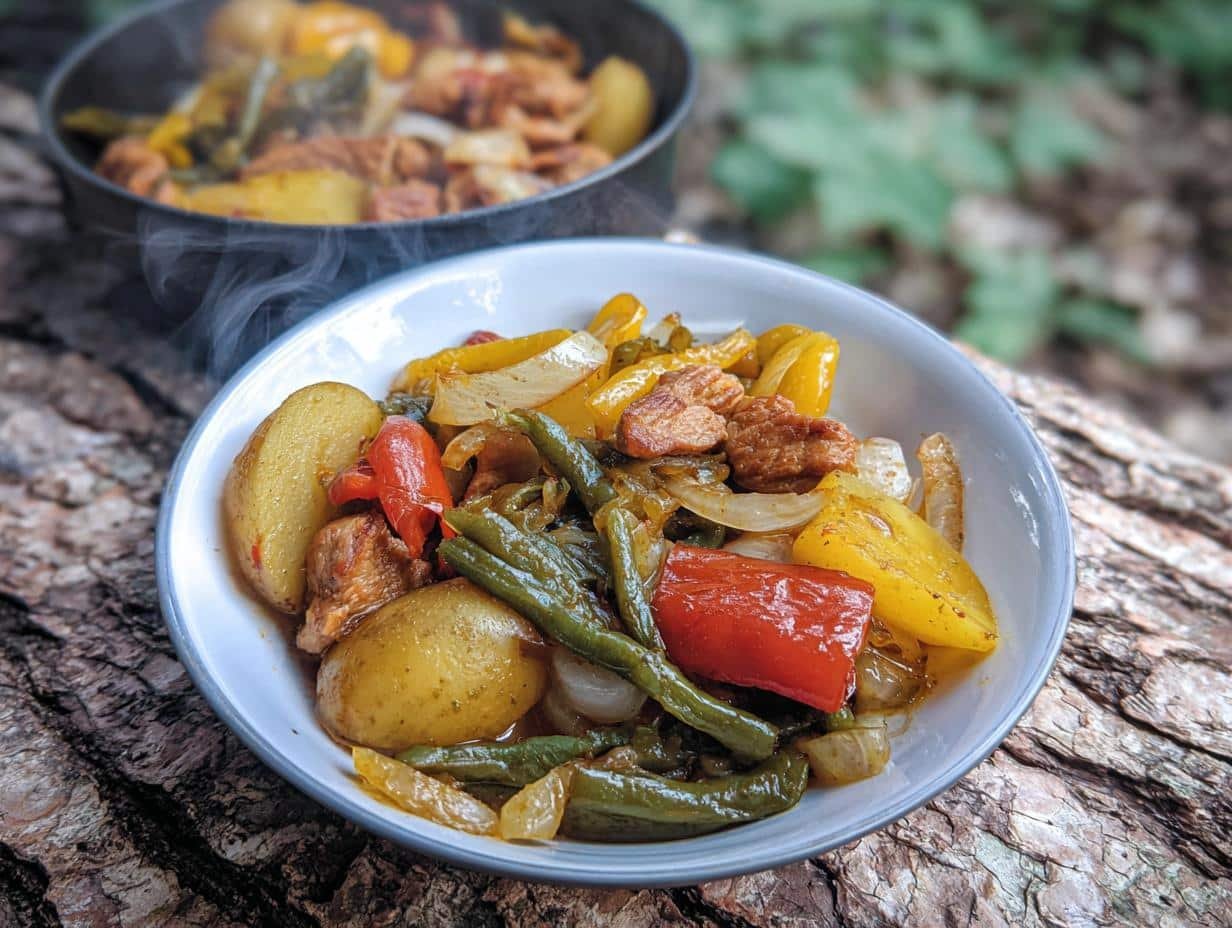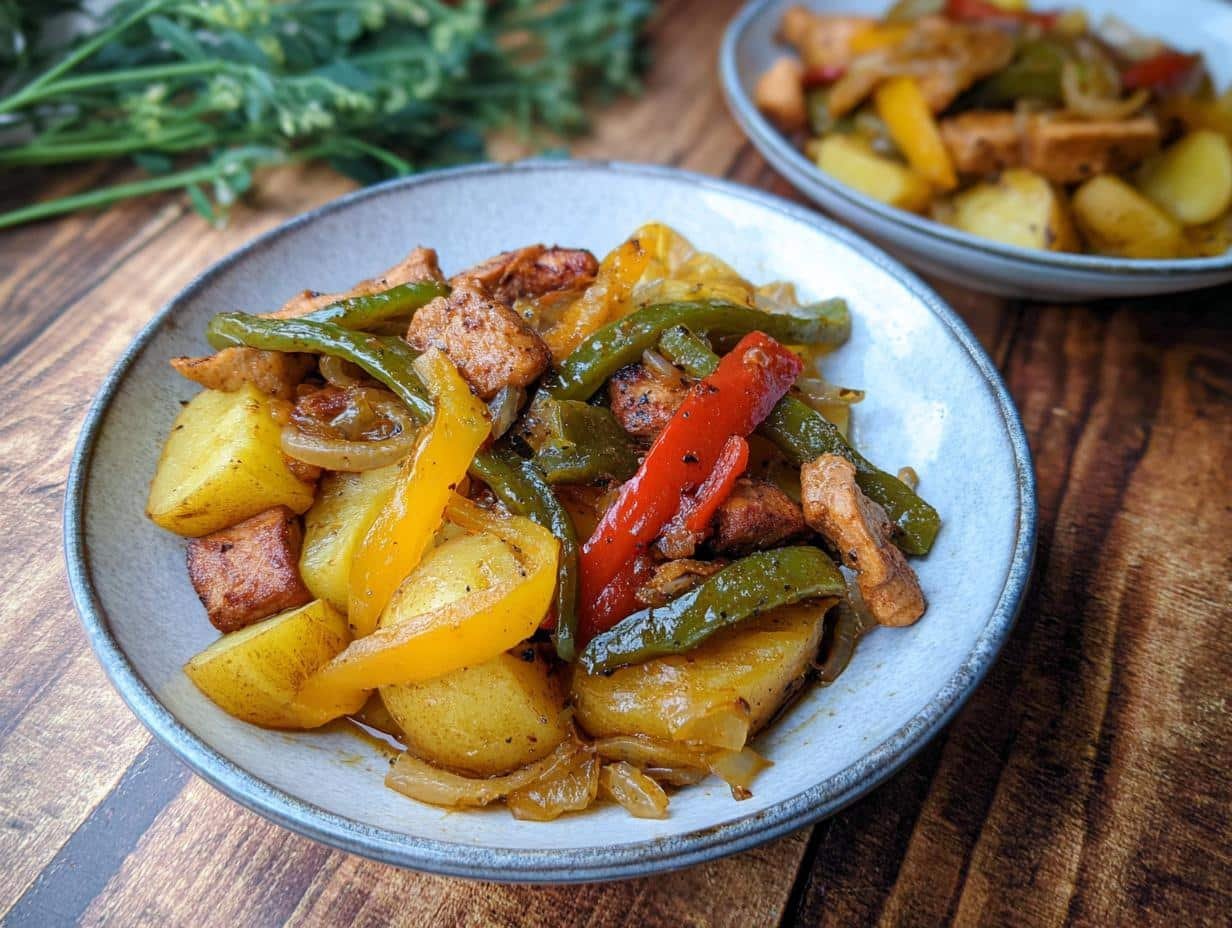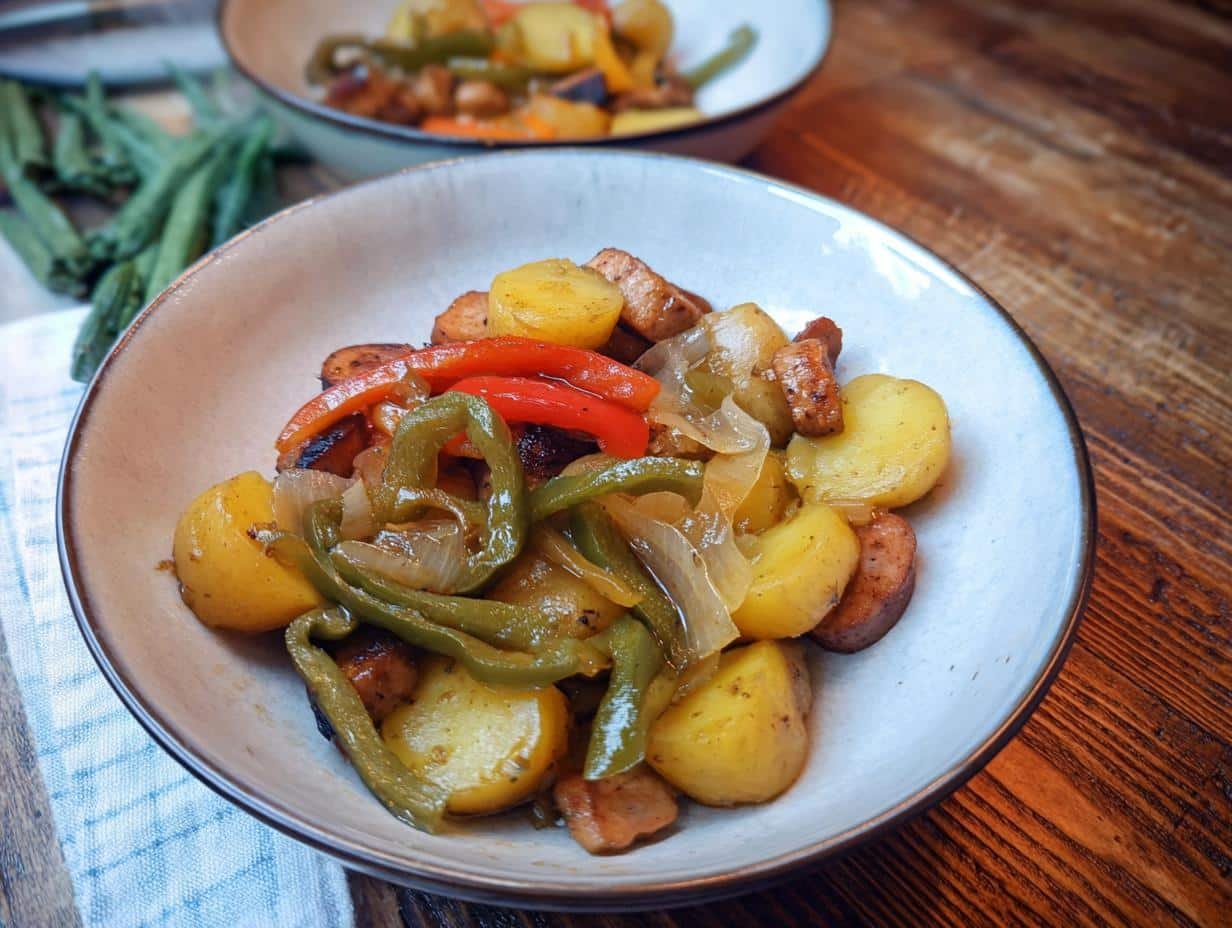Swamp potatoes have a way of bringing me back to childhood summers spent exploring the marshy edges of my grandparents’ farm. I remember digging for these unique tubers with my grandpa, the earthy smell of the damp soil filling the air as we searched for the tell-tale signs of the swamp potato plant. We’d unearth these knobbly, irregular shapes, and he’d tell me stories about what are swamp potatoes and how they’ve sustained families for generations. Now, the thought of growing swamp potatoes at home fills me with the same excitement. The anticipation of that first harvest, the unique texture, and the delicious meals we’ll create – it’s truly special. Let’s get cooking!
What Are Swamp Potatoes?
So, what are swamp potatoes? These fascinating tubers, also known as Sagittaria cuneata, are aquatic or semi-aquatic plants native to North America. You’ll often find the swamp potato plant thriving in shallow water, marshes, and along the edges of lakes and streams. Foraging for wild swamp potatoes can be an adventure, but it’s crucial to know that not all wild tubers are safe. The question on everyone’s mind is, are swamp potatoes edible? Absolutely, and they’re quite delicious when prepared properly! They are known for their starchy texture and a subtly sweet, nutty flavor.
Swamp Potato Cultivation and Identification
Learning how to grow swamp potatoes is a rewarding experience for any gardener looking for something unique. These tubers thrive in moist, boggy conditions, making them ideal for water gardens or areas with consistently wet soil. Successful swamp potato cultivation relies on providing plenty of water and sunlight. You’ll want to plant them in rich, organic soil, ideally in containers submerged in a pond or water feature to control their spread. Proper swamp potato identification is absolutely critical before you even think about harvesting or consuming them. Many wild plants can look similar, and misidentification could lead to serious health risks. Always be 100% sure of your identification before consuming anything from the wild.
Growing Swamp Potatoes at Home
For those interested in growing swamp potatoes at home, consider starting with tubers from a reputable supplier. Plant them in pots filled with heavy clay soil and submerge the pots in about 4-6 inches of water. Ensure they receive at least six hours of sunlight daily. Harvesting typically occurs in the fall after the plant’s foliage begins to die back.
Swamp Potato Identification Tips
Accurate swamp potato identification is key to safety. Look for arrowhead-shaped leaves emerging from the water or the soil. The plant typically grows in clumps. Remember, if you have any doubt whatsoever about identifying a plant, it’s best to err on the side of caution and avoid it. Never consume a wild plant unless you are absolutely certain of its identity and edibility.
Swamp Potato Uses and Benefits
The versatility of swamp potatoes is truly remarkable, offering a range of swamp potato uses that extend beyond simple sustenance. People have enjoyed these starchy tubers for centuries. Their mild, slightly nutty flavor makes them a fantastic base for countless dishes. I’ve found that they absorb flavors beautifully, making them perfect for hearty stews and savory stir-fries. Beyond their culinary appeal, swamp potato tubers also offer some compelling swamp potato benefits, contributing valuable nutrients to your diet.
Culinary Uses of Swamp Potatoes
When it comes to preparing these unique veggies, the possibilities are endless! I love searching for best swamp potato recipes online. They can be boiled, baked, mashed, or fried, much like their more common potato cousins. Many delicious swamp potato dishes feature them as a hearty side, absorbing all the wonderful flavors of sauces and broths. Their starchy nature makes them incredibly satisfying.
Nutritional Value of Swamp Potatoes
Delving into the swamp potato nutrition reveals why they’re a beneficial addition to your meals. These tubers are a good source of carbohydrates, providing energy, and they also contain a decent amount of fiber, which aids digestion. You’ll find they have a good amount of swamp potato starch, contributing to their pleasing texture. I was pleasantly surprised by their protein content too, making them a well-rounded food source.
Best Swamp Potato Recipes
When you’ve mastered identifying and cultivating these unique tubers, the real fun begins: cooking up some delicious swamp potatoes recipe creations! I’ve found that among all the wonderful swamp potato dishes you can make, fajitas are a definite crowd-pleaser. They’re relatively simple to prepare, and the earthy flavor of the edible swamp potatoes pairs wonderfully with the zesty fajita seasoning. It’s a fantastic way to introduce these fascinating vegetables to your family and friends. Get ready for a truly satisfying meal that highlights the best of what these marshy gems have to offer!
Ingredients for Swamp Potato Fajitas
Here’s what you’ll need to make these amazing fajitas:
- 1 lb Swamp Potatoes, scrubbed and sliced – These are the star, providing a unique earthy flavor and tender texture.
- 1 lb Chicken breast, cut into strips – You can substitute with steak or firm tofu for a vegetarian option.
- 1 Onion, sliced – Choose a medium yellow or white onion for a good balance of sweetness and bite.
- 1 Bell pepper, sliced – Any color works, but I love using a mix of red and green for visual appeal and flavor.
- 1 packet Fajita seasoning – This blend of spices is key to that classic fajita taste.
- 1/4 cup Olive oil – Extra virgin olive oil is great for its flavor, but any cooking oil will do.
- 1/4 cup Water – Helps create the sauce and tenderize the ingredients.
How to Make Swamp Potato Fajitas
- Step 1: Place the prepared sliced swamp potatoes directly into your slow cooker.
- Step 2: Arrange the chicken strips, sliced onion, and sliced bell pepper on top of the swamp potatoes.
- Step 3: In a separate bowl, whisk together the fajita seasoning, olive oil, and water until well combined. This creates a flavorful sauce.
- Step 4: Pour the seasoning mixture evenly over the chicken and vegetables in the slow cooker.
- Step 5: Cover the slow cooker and cook on low for 6-8 hours, or on high for 3-4 hours, until the chicken is cooked through and the swamp potatoes are tender and flavorful. The aroma filling your kitchen will be incredible!
- Step 6: Serve the swamp potato fajitas hot, perhaps with warm tortillas and your favorite toppings like salsa, sour cream, or avocado.
Expert Tips for Swamp Potato Fajitas
Want to elevate your swamp potato fajitas? I’ve picked up a few tricks that make a big difference. These tips will ensure your swamp potatoes are perfectly tender and infused with flavor, making this a dish you’ll want to make again and again. They truly transform a simple meal into something special.
- Ensure your swamp potatoes are sliced evenly for consistent cooking.
- Don’t overcrowd the slow cooker; give the ingredients space to cook properly.
- Taste the seasoning mixture before pouring it into the slow cooker and adjust if needed.
- If you like a little char or crispness, you can briefly broil the cooked fajita mixture in an oven-safe dish for a few minutes.
What’s the secret to perfect Swamp Potato Fajitas?
The real secret is the slow cooker’s ability to meld flavors. For an extra kick, try adding a pinch of smoked paprika to your fajita seasoning. This adds a lovely depth that complements the earthy swamp potatoes beautifully.
Can I make Swamp Potato Fajitas ahead of time?
Yes, you can prep the ingredients ahead! Chop your vegetables and slice the swamp potatoes and chicken up to 24 hours in advance. Store them in airtight containers in the refrigerator. Combine everything in the slow cooker when you’re ready to cook.
How do I avoid common mistakes with Swamp Potato Fajitas?
Avoid overcooking the swamp potatoes; they should be tender, not mushy. Also, don’t skimp on the seasoning – it’s what gives the fajitas their signature flavor. Finally, be sure to use fresh ingredients for the best taste and texture.
Serving and Storing Swamp Potatoes
Once your swamp potato fajitas are ready, serving them is a joy! I love to serve them piping hot with warm corn or flour tortillas. For toppings, think classic fajita accompaniments like shredded lettuce, diced tomatoes, a dollop of sour cream, and of course, some creamy avocado slices. You can also add a sprinkle of fresh cilantro for an extra burst of flavor. These swamp potato dishes are also fantastic served over rice if you’re looking for a heartier meal.
Leftovers are fantastic! To store your delicious swamp potato fajitas, let them cool completely, then transfer them to an airtight container. They’ll keep well in the refrigerator for up to 3 days. When you’re ready to reheat, I find the best method is to gently warm them in a skillet over medium-low heat, adding a tablespoon of water or broth to help loosen things up and prevent drying. This ensures the swamp potatoes remain tender and flavorful, making that second serving just as satisfying as the first.

Frequently Asked Questions About Swamp Potatoes
I get asked a lot of questions about these unique tubers, and I’m happy to share what I know! Here are some of the most common inquiries I receive about swamp potatoes:
What are the different swamp potato varieties?
While the term “swamp potato” often refers to Sagittaria cuneata, there are other related species within the Sagittaria genus that are also known as arrowhead or duck potato. These swamp potato varieties can differ slightly in size and flavor, but generally share similar growing habits and culinary uses. It’s always best to confirm the specific variety you’re working with.
Is foraging for wild swamp potatoes safe?
Swamp potato forage can be a rewarding experience, but safety is paramount. It’s absolutely crucial to have positive identification before consuming any wild plant. Many plants can look similar, and misidentification could be dangerous. If you’re new to foraging, I highly recommend going with an experienced guide or using reliable field guides to ensure you’re collecting the correct, edible species. For more on safe foraging practices, you can check out resources on forest health.
What are the best swamp potato dishes to try?
Beyond fajitas, I love experimenting with these tubers! They are fantastic mashed as a side dish, similar to mashed potatoes but with a slightly nuttier flavor. You can also dice them and add them to hearty stews or soups, where they absorb the broth beautifully. Some people even enjoy them roasted or fried for a crispy texture. The possibilities are truly exciting! For inspiration on unique potato preparations, you might find mashed potato cheese puffs interesting.
Are swamp potatoes nutritious?
Yes, swamp potatoes offer a good nutritional profile! They are a source of complex carbohydrates, providing energy, and also contain dietary fiber, which is great for digestion. They provide essential vitamins and minerals, making them a wholesome addition to your diet. Their starchy content makes them quite filling and satisfying.
Print
Swamp Potatoes: Tasty Fajitas Recipe Awaits
- Total Time: 4 hours 15 minutes
- Yield: 4 servings 1x
- Diet: Vegetarian
Description
Learn about swamp potatoes, their cultivation, uses, and nutritional benefits. Discover how to identify and prepare these unique tubers.
Ingredients
- 1 lb Swamp Potatoes, scrubbed and sliced
- 1 lb Chicken breast, cut into strips
- 1 Onion, sliced
- 1 Bell pepper, sliced
- 1 packet Fajita seasoning
- 1/4 cup Olive oil
- 1/4 cup Water
Instructions
- Place sliced swamp potatoes in the slow cooker.
- Add chicken strips, onion slices, and bell pepper slices.
- In a bowl, mix fajita seasoning, olive oil, and water. Pour over chicken and vegetables.
- Cover and cook on low for 6-8 hours or on high for 3-4 hours.
- Serve the swamp potato fajitas hot.
Notes
- Swamp potatoes can be found in marshy areas.
- Proper identification is crucial before consumption.
- Enjoy your swamp potato dish.
- Prep Time: 15 minutes
- Cook Time: 4 hours
- Category: Main Dish
- Method: Slow Cooker
- Cuisine: American
Nutrition
- Serving Size: 1 serving
- Calories: 350
- Sugar: 5g
- Sodium: 500mg
- Fat: 15g
- Saturated Fat: 3g
- Unsaturated Fat: 12g
- Trans Fat: 0g
- Carbohydrates: 25g
- Fiber: 4g
- Protein: 30g
- Cholesterol: 80mg

